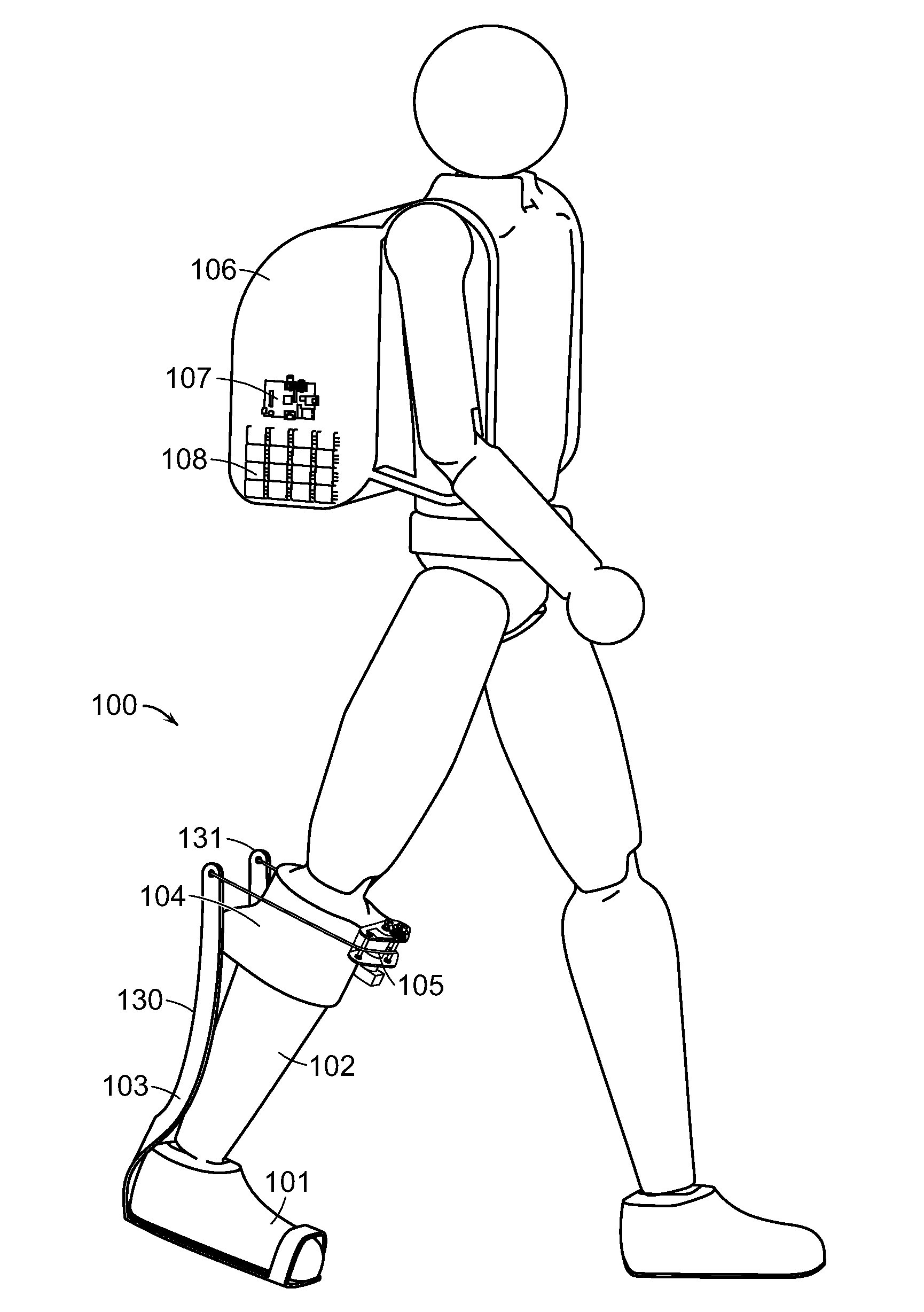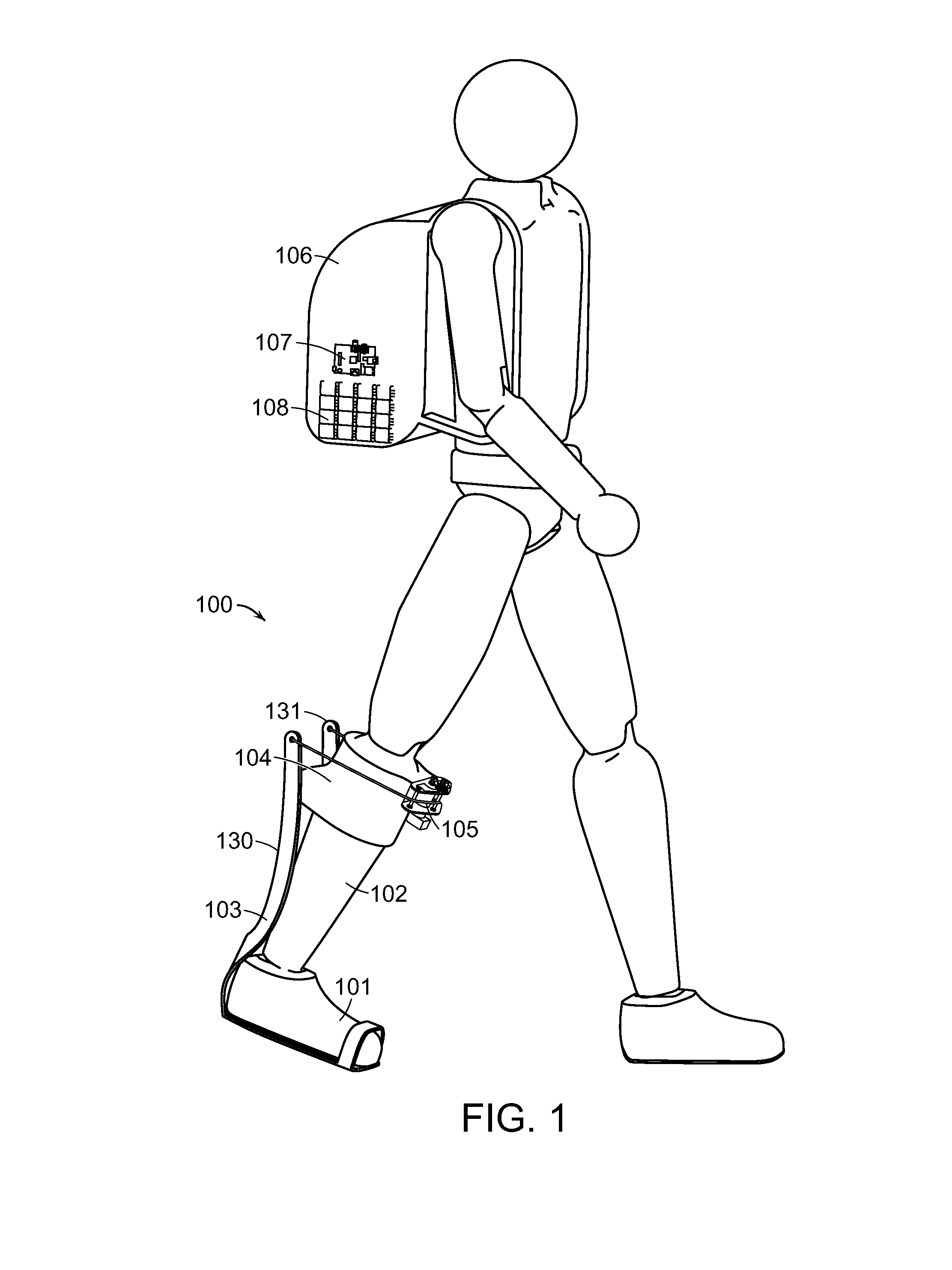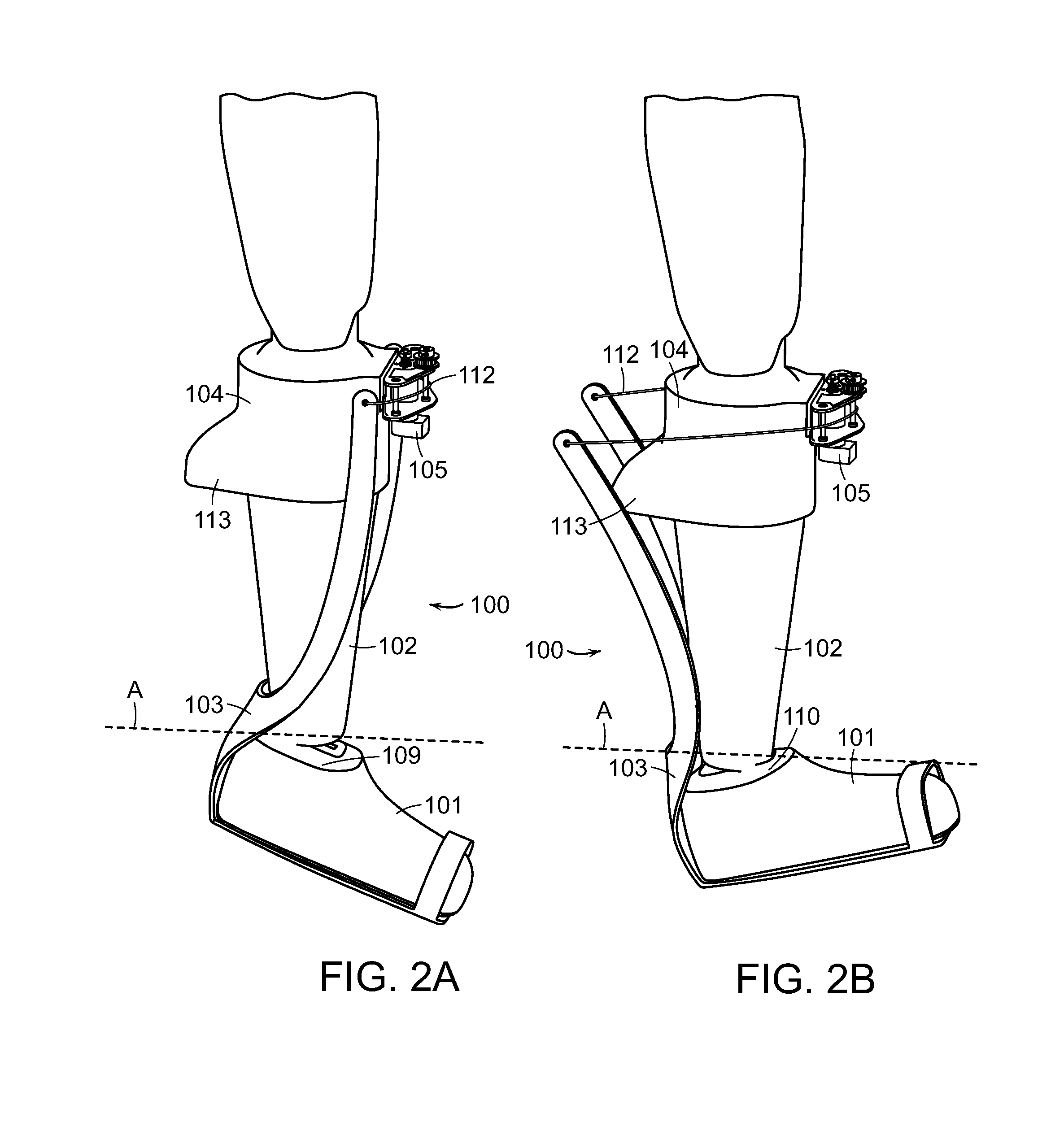Optimal design of a lower limb exoskeleton or orthosis
a technology of exoskeleton and lower limb, applied in the field of optimal design of lower limb exoskeleton or orthosis, can solve the problems of reducing flexibility, inconvenience for users, and disrupting device function, so as to augment or rehabilitate the physical capabilities of individuals, avoid mismatch between limb joint motion and mechanical interface motion, and improve comfort and lightness
- Summary
- Abstract
- Description
- Claims
- Application Information
AI Technical Summary
Benefits of technology
Problems solved by technology
Method used
Image
Examples
Embodiment Construction
[0066]A description of example embodiments of the invention follows.
[0067]The invention is directed to an assistive or augmenting device that physically interacts with a person. One part of the invention is directed to a lower limb joint exoskeleton that physically interfaces with a person. A second part of the invention is directed to a joint exoskeleton or assistive device that physically interfaces with a person without having a significant mismatch between limb joint motion and mechanical interface motion in the same plane. A third part of the invention is directed to an ankle joint exoskeleton or assistive device that interfaces with a person without adding significant additional leg inertia to the human body or impeding ankle joint motion. A fourth part of the invention is directed to a device that enables external-internal rotation and inversion-eversion rotation while applying a torque in the sagittal plane, so that an attached biological ankle joint can maintain the normal ...
PUM
 Login to View More
Login to View More Abstract
Description
Claims
Application Information
 Login to View More
Login to View More - R&D
- Intellectual Property
- Life Sciences
- Materials
- Tech Scout
- Unparalleled Data Quality
- Higher Quality Content
- 60% Fewer Hallucinations
Browse by: Latest US Patents, China's latest patents, Technical Efficacy Thesaurus, Application Domain, Technology Topic, Popular Technical Reports.
© 2025 PatSnap. All rights reserved.Legal|Privacy policy|Modern Slavery Act Transparency Statement|Sitemap|About US| Contact US: help@patsnap.com



